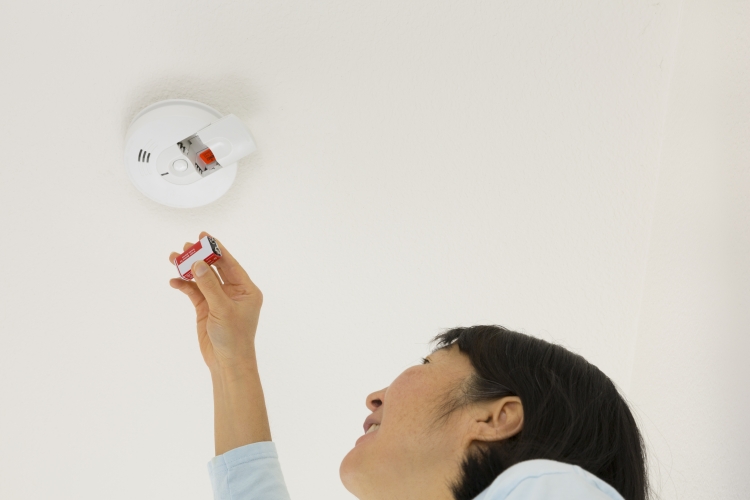Moving to a new home is like meeting someone for the first time. No matter how well you hit it off, it takes some time before you get to know them. In fact, one of the pleasures of homeownership is going through that process. You settle in, make memories, and develop a lasting connection that transforms a house into a home.
In some ways, the process should be formal. In other words, there are some things you should get to know about your house right away, even before you unpack. There are other things you should make a standard part of your move, because they relate to your safety and security.
Top Safety Precautions for Your New Home
1. Know how to shut off your water and electric
When you move to a new house, one of the first things you should do is learn how to shut off the water supply. That means physically walking the exterior of the house to locate and identify the shut-off valve. Knowing how to shut off the water when a pipe bursts or when your plumbing needs repairs will help prevent disastrous water damage.
Likewise, you should locate the circuit breakers in your home. This way, if your electrical system overloads, you’ll know where to reset the breaker. You’ll also know how to temporarily shut off electricity when your electrical system needs repairs. The previous owner may have already labeled the breakers. If not, take some time to learn which circuit breakers affect which outlets and label them yourself.
2. Test your smoke detectors
Don’t take any chances with your smoke detectors. Walk through your new home and identify where they’re located. Be sure to test them as well, or just go ahead and change the batteries immediately. That way, you’ll know they’re fresh, and you can begin a schedule of regular testing.
3. Take a look at the trees
If your house has a yard, give it a once-over as soon as you move. Make note of whether trees in your yard are hazards or might become one someday. What damage would they cause if they toppled over? Are branches hanging into your neighbors’ yards that might cause damage if they were to break off? Likewise, is your home in any danger due to trees in their yards?
4. Designate first-aid stations
Every home should have at least one first-aid kit for emergencies. If you didn’t have them before, put them together before or right after you move. Just remember, they won’t do any good unless everyone in the household knows where they are. During an emergency, there won’t be time to hunt them down. So, make sure you put your first-aid kits in places that are intuitive and easy-to-remember. If for some reason you move them to new locations, make sure to keep the rest of the household informed.
5. Do the same with fire extinguishers
Fire extinguishers can help stop small fires from becoming massive, catastrophic fires. The key is to have several of them in strategic locations (i.e., your kitchen), and to make sure everyone knows where they are and how to use them.
6. Replace the filters in your HVAC
Dust and other allergens can cause health problems over time. At the very least, they can make you and other members of the household uncomfortable. You can prevent that by replacing the filters in your HVAC system as soon as you move in. The advantage of doing so right away is that you’ll always know the first time the filters were changed by you – the very special day of your move-in – and that will help set a schedule for regular updates.
7. Learn escape routes and designate a meetup
 This tip is less about the house itself, and more about what to do in case of an emergency in your new home. If there’s a fire, for example, you may need to evacuate immediately. To avoid panicking, take some time now to think about how you’ll exit safely. You should have at least two different routes for leaving the house, and your household should have a designated meetup spot in case you get separated during the evacuation. By designating a meetup spot, which could be across the street or at a corner intersection, you’ll know if someone is missing.
This tip is less about the house itself, and more about what to do in case of an emergency in your new home. If there’s a fire, for example, you may need to evacuate immediately. To avoid panicking, take some time now to think about how you’ll exit safely. You should have at least two different routes for leaving the house, and your household should have a designated meetup spot in case you get separated during the evacuation. By designating a meetup spot, which could be across the street or at a corner intersection, you’ll know if someone is missing.
8. Replace the locks
When you move, it’s a basic safety precaution to replace locks on all the doors to your new home. The previous owners may have given up their keys, but there’s no way to know how many other copies are floating around out there. If the doors don’t have deadbolts, you may want to add them as well.
While you’re at it, check the locks on your windows to ensure that they work. The best way to do this is by trying to open the windows from the exterior of the house while they’re locked. If the locks are broken or easily overpowered, then it’s time for new ones.
9. Go room-to-room with your safety checklist
The tips offered here apply to any home, pretty much anywhere. But your home may require other safety precautions. For example, dirty chimneys are a fire hazard, so if your home has a fireplace, get a professional to inspect and clean it as soon as possible. Also, households with children may need to take additional safety precautions as soon as they relocate.
10. Schedule a home inspection
Schedule a home inspection, arrange for a professional home inspection to identify any potential safety hazards or maintenance issues. This comprehensive assessment can uncover hidden problems and provide recommendations for ensuring the safety and structural integrity of your new home.
11. Install security cameras
Adding security cameras can deter potential intruders and provide peace of mind. Look for options that offer night vision and remote access through mobile apps. Position cameras at entry points, driveways, and common areas to monitor activity around your home effectively.
12. Upgrade window security
Ensure all windows are equipped with sturdy locks, and consider installing window security bars or anti-lift devices on ground-floor windows. Additionally, window film can make glass harder to break, adding an extra layer of security.
13. Carbon monoxide detectors
Install carbon monoxide detectors near sleeping areas and on every level of your home. Regularly test these devices and replace batteries at least twice a year. Choose models that provide voice alerts for added clarity during emergencies.
14. Electrical inspection
Hire a licensed electrician to inspect your home’s wiring and electrical systems, especially if the house is older. Look for signs of outdated or frayed wiring, overloaded circuits, and improperly grounded outlets. This proactive measure can prevent electrical fires and ensure safety.
For a comprehensive list of other things to think about, check out this room-by-room safety checklist.



